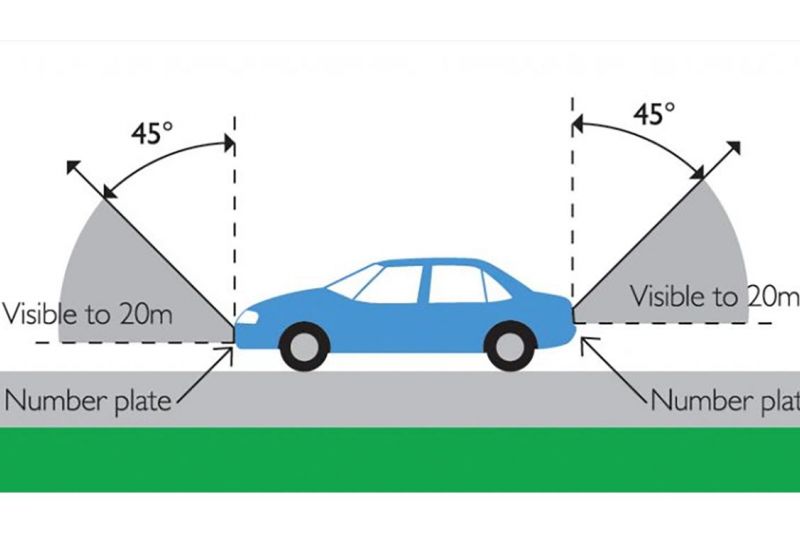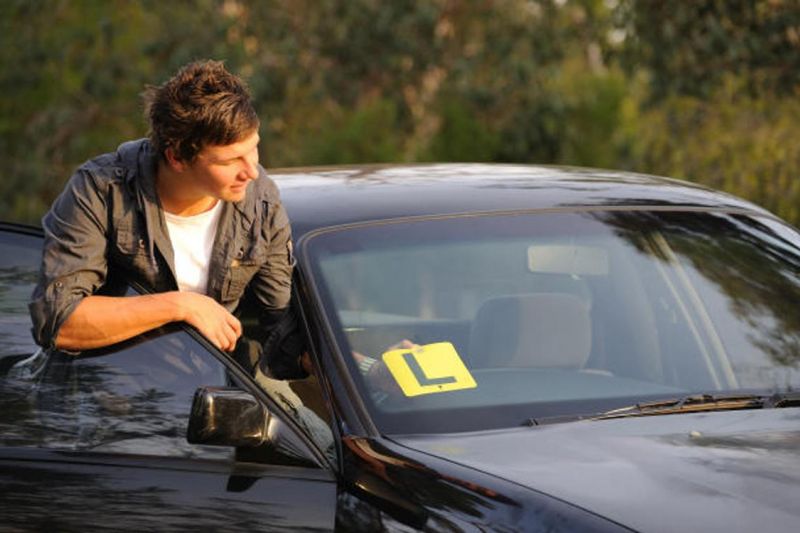There is nothing shameful about learning to drive or being a provisional licence holder, and yet there are still hundreds, if not thousands of road users on their L plates or P plates who insist on trying to hide their licence status.
- Requirements for positioning your L plates or P plates vary
- Make sure you read your relevant state or territory rules
- If you do the wrong thing, you could be fined!
It’s easy to see why you might do it. In some states, an L-plater has a maximum speed limit of 90km/h, no matter if the signs allow up to 110km/h or not. But hiding your yellow Ls behind your number plates in the hope that a police officer won’t fine you for speeding is a really, really silly thing to do.
If you do not exhibit your L or P plates correctly you could face a fine and demerit points, and the latter are even more precious when you’re a learner or provisional driver.
So what are the rules in each of the Australian states and territories around plate positioning? Here’s what you need to know:
New South Wales
“When driving, learners must display L plates clearly on the front and back of the car. The plates must be on the outside, or there must be an L sign on the roof. The letter L on the plate must not be hidden. So your plates do not fall off, secure them with a clip or holder.”
The important part there is “on the outside” and that means you cannot display an L or P plate in the window of your car.
There is a $272 fine and two demerit points if you “fail to display ‘L’ plates on car as required”, or have “no P plates as required” for P1 and P2 drivers.
Victoria
The road rules state that “your P plates must be clearly visible”, and that “you must not drive a motor vehicle (other than a tractor) unless appropriate P plates are displayed facing out from the front and the rear of the vehicle so that the letter P and the colour of the plate is clearly visible from a distance of 20 metres behind and in front of the vehicle.”
And what might constitute a plate not being clearly visible? If it’s in the window of the car, but the window is tinted, that could be an issue: “If you have tinted windows, VicRoads recommends that you should consider using external plates. Depending on how dark the tint is, internal plates may be difficult to see and you could be fined and incur demerit points for not having them clearly visible.”
If you “fail to display ‘L’ plates when and as required” in Victoria, you could be hit with a single (1) demerit point penalty and a $165 fine. The state puts more onus on P-platers, too, with that penalty increasing to three demerit points (still a $165 fine) for “fail to display ‘P’ plates when and as required”.
Also worth noting that Vic is strict on the colouring of the plates – that state has it a bit different, in that the colour is on the P plate background and the lettering is white. But don’t go thinking a coloured in square in your favourite connector pen green or red will do the job – there are specific colours applicable. Same with L plates.
Another interesting point for P platers in Victoria – there are some exemptions that allow drivers to not display P plates if they working in specific jobs. No Ps are required to be displayerd if you are: a member of the police force driving a vehicle for work; a member of the Country Fire Authority (CFA) driving a vehicle for fire fighting operations; driving an ambulance service or a Victorian State Emergency Service (SES) vehicle for work.
South Australia
The SA government rules around displaying L and P plates are similar to most other jurisdictions. For example, “P-plates must be clearly visible from the front and rear of the vehicle (rear only for motor bikes).”
For Learner’s permit or P1 licence holders that are driving where only one of two plates is affixed, the fine is $230, while if you have no plates attached at all, the fine increases to $397 and two demerit points.
Provisional P2 licence holders do not need to display P plates.
ACT
According to the Driver Licencing Regulation (2000) in the ACT, the offence “learner driver not display L-plates as required” could attract a $208 fine. No demerits, however.
What does “as required” mean in this instance? According to ACT Policing: “P and L plates must be clearly displayed on front and rear of the vehicle in a way that is easily visible for other drivers. The plates must be the correct colour and size (155mm by 155mm) and the full letter must always be visible. Plates specifically designed to be displayed in the front or rear windscreen may be used. However, a slanted windscreen is not suitable for displaying plates as the plate will face up, towards the sky, and won’t be easily visible to other drivers. Other options, such as magnetic plates, plate display brackets and plate clips are also available.”
Further, the ACT’s Road Rules Handbook states that P plates are: “meant to be easily seen by other motorists, for your safety and theirs. The plates must be placed at the front and rear of the vehicle in a conspicuous position so they are clearly visible from in front of and behind the vehicle. ‘P’ plates are not clearly visible if they are placed, for example, behind wiper arms, behind rear louvres or inside tinted windows.”
- Queensland: If you are a learner licence holder and you fail to display “L plates clearly legible at front and rear of vehicle”, you could be fined $230 and two demerit points. The same penalties apply for vehicles with a P1 driver (red Ps) and P2 driver (green Ps).
- Western Australia: The Road Safety Commission states that: “The appropriate L or P plate must always be displayed. Plates can be purchased or printed at home.” That seems a bit vague, right?
The Department of Transport clarifies things, positing: “You must display ‘L’ plates on the front and rear of the vehicle when you are driving (penalties apply).” We couldn’t establish what those penalties are.
- Northern Territory: The onus is on the licenced driver alongside the L plater in the NT, with the rules stating: “A licence holder who is occupying a front seat of a vehicle must not permit the vehicle to be driven by a learner unless there are L-plates displayed conspicuously so as to be clearly visible from both the front and the rear of the vehicle.
“A learner must not drive a vehicle unless there are L-plates displayed conspicuously so as to be clearly visible from both the front and the rear of the vehicle.”
The Territory’s traffic infringements list states the penalty for “Drive without L or P plate when required” is a $100 fine.
- Tasmania: The rules around L and P plate placement is put simply – no matter the licence type, plates must be displayed so that “they are clearly visible from the front and back of the car they are driving”.
If you are a novice driver or rider on Ls and “fail to display clearly visible L-plates as required” you could be hit with two demerits and a $90 fine. The same penalty applies for P-plates. P1 drivers must “display red on white P plates and ensure your P plates can be seen from the front and back of your car”, while P2 drivers must “display green on white P plates and ensure your P plates can be seen from the front and back of your car”.
Not intended as legal advice. Check with the relevant roads authority in your state or territory.


